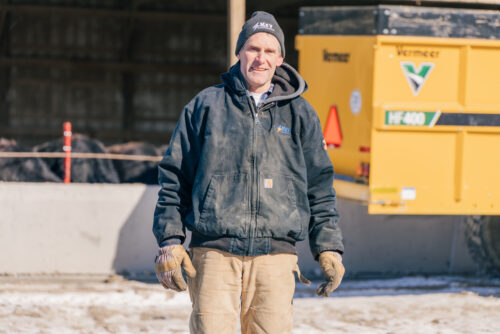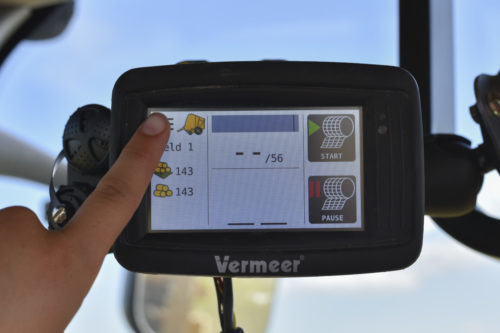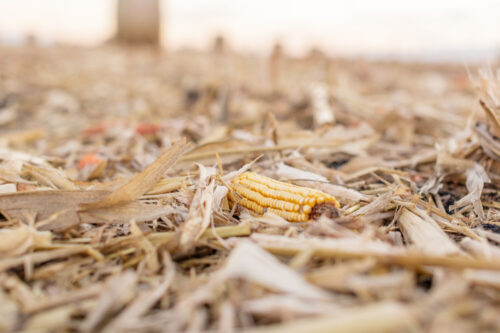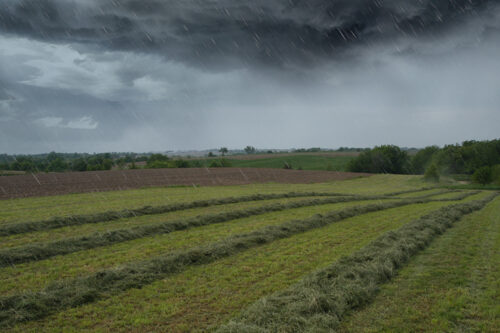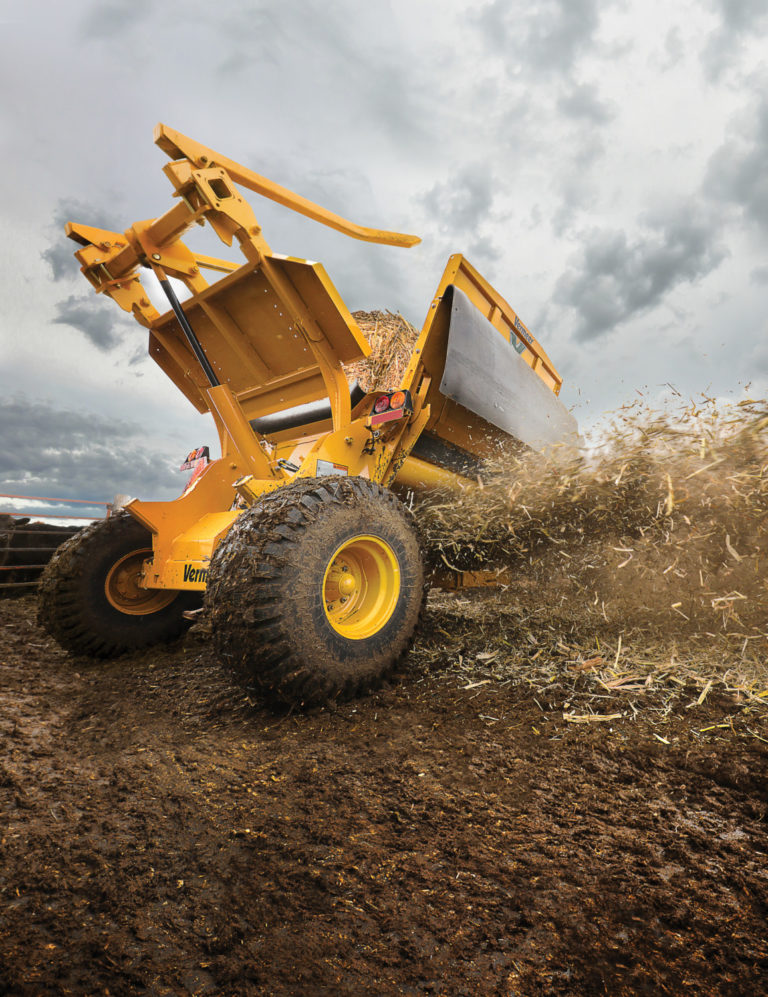
Best Bedding Practices
January 2019
Comfortable cattle are productive cattle
No matter how you manage your cattle operation, achieving the highest rate of gain in your animals is a top priority. And depending on your location, facilities and overall herd management, bedding your cattle is one way to promote strong gains and healthy cattle.
Producers can use a variety of forage sources for bedding; while hay or straw has long been the standard for bedding materials, cornstalks have in recent years emerged as a functional, readily available bedding material. But it’s not just what you use, it’s how you use it, catering how you bed cattle to your production system.
“When I have this conversation with producers, the first thing I ask is to have them tell me about their situation. There is no one-size-fits-all, silver-bullet solution,” said Warren Rusche, South Dakota State University Extension beef feedlot management specialist. “It’s all about providing cattle comfort, managing through challenging environmental conditions and sustaining a higher rate of gain.”
Bedding best practice factors
Do your cattle need bedding? The first step in making that determination is a simple one: Just listen. The animals will likely tell you if they’re experiencing discomfort — and resulting in poor performance — that bedding could remedy.
“I talk with customers about the value of quiet cattle. That means you’re achieving maximum rate of gain. The cattle will tell you whether they’re comfortable or not. Just stop and listen,” said Vermeer Technical Service Support Specialist Mike Kindley. “If I go onto a customer’s feedlot and the cattle are raising Cain, they’re either about to be fed or they’re not happy. That’s a clue they may need bedding to be comfortable.
"It's all about providing cattle comfort, managing through challenging environmental conditions and sustaining a higher rate of gain."
In determining the right bedding scenario for your cattle once you’ve confirmed the need, it’s important to start by asking some key questions. The right type and quantity of bedding depends on environmental conditions, the type of facility or location, per-head square footage and the surface on which bedding will be provided.
“The initial conversation should be about facilities and temperatures. If we’re dealing with backgrounded cattle in really big lots with some drainage and the mud isn’t too bad, those cattle may not benefit from bedding,” Rusche said, adding that bedding is more a part of the “art” than the “science” of managing beef cattle. “For bigger cattle with less square footage where mud’s more of an issue when it’s cold, we start seeing the benefits of bedding.”
Recent research in northeastern Nebraska has shown improvements in rate of gain and overall performance in cattle that are adequately bedded in the first 70 days of winter, Rusche said. That translated to a $60 to $80/CWT benefit once those animals were marketed.
Size it right
Producers have a lot of options for cattle bedding materials, ranging from sand and sawdust to straw hay and cornstalks, with the latter two being the most readily available for the majority. Cost, availability, labor, volume needed and how quickly the material breaks down are all important factors in selecting the right bedding material for your operation.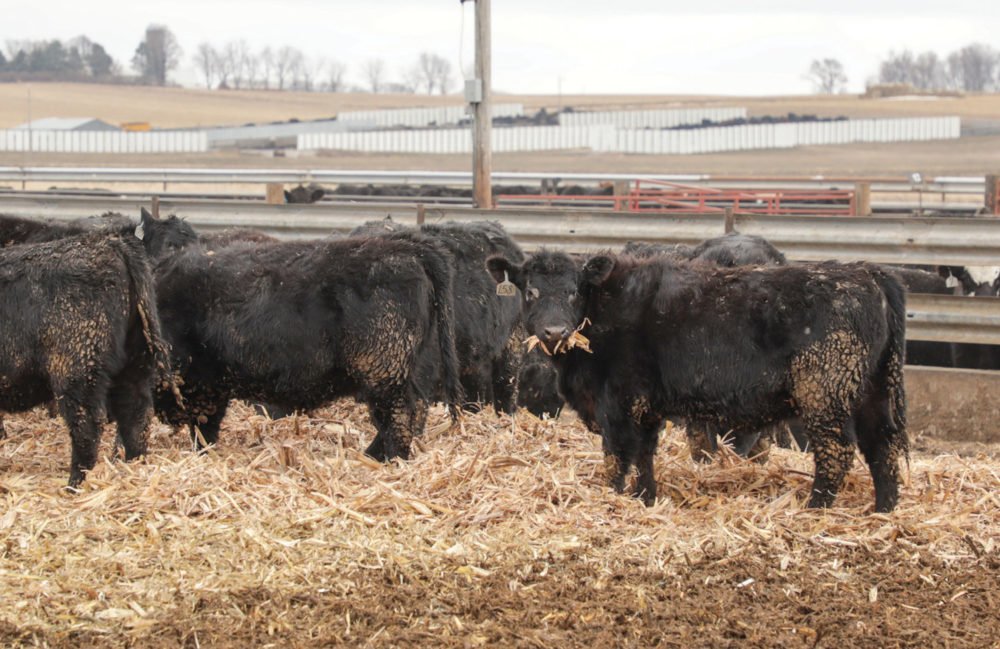
Once you’ve identified basic bedding needs based on environmental conditions and facilities, the next step is determining the right quantity of bedding based on conditions. Using too little in a scenario where there is a lot of mud, for example, can sometimes make conditions worse, Rusche said. Bedding material should be distributed evenly in the targeted space, and selecting and sizing the right material will help accomplish the same specific goal, which should always be kept in mind when managing bedding.
“We want something that’s going to be large enough to hold together and not deteriorate into the mud. We want to form an insulated mat to insulate the cattle from ground conditions and keep heat from leaving them,” Rusche said. “If we size it too fine and it breaks down too fast, we’ve defeated the purpose and made it worse. Sometimes, coarser sizing is better, and it’s a different decision process than sizing feed.”
But bigger isn’t always better. If moisture is your primary concern in bedding, the material’s absorbency is a bigger consideration. If temperature is your primary culprit, a longer cut may be better, but if it’s moisture, consider a shorter cut, Kindley said.
“If you’re putting it out on dirt, I’d go with a little longer cut than in a building. Absorbency is not as good with a longer cut as it is with a shorter cut,” he said. “There are benefits to both, it just depends on what’s more important in your situation.”
A year-round job
Verifying you have the right type, quantity and size of bedding material available for your beef herd to sustain optimal performance through the winter and early-spring months doesn’t start when you process the first bale. It starts during the growing season by accounting for your bedding needs in managing the necessary crops. It’s important to produce bales that will hold up and can be conveniently handled, managed and distributed when the time comes.
“You should pay a lot of attention to bale size and shape, because higher-quality, tightly wrapped bales are more convenient to put through a bale processor since they maintain their shape better. They also shed water better, keeping your bedding solution drier,” Kindley said.“The process starts way back in the summer. If you make bad bales, you’ll pay for it all winter long. You have to think about the whole process, because what you do in the summer will influence the real results you see that only come out in the winter. If you put up high-quality material, wrap it well and store it properly, it should result in a better bedding solution.
"Cost, availability, labor, volume needed and how quickly the material breaks down are all important factors in selecting the right bedding material for your operation."
Machinery considerations
Using machinery like the Vermeer BPX9010 bale processor to size and distribute forage bedding has major benefits if managed the right way. A processor can reduce the labor required to manage bedding, but how much depends on specific facilities, conditions and features of the processor itself. For example, the toolless cut control bars on the BPX9010 bale processor enable the operator to conveniently make changes to material sizes.
The benefit of a processor can stretch even further in a year like this, when some regions continue to face forage shortages. “It’s amazing how using one of these processors reduces the number of bales you have to go through. You don’t use near as much material,” Kindley said. “You can get by with less hay, straw or stalks and stretch what you have.”
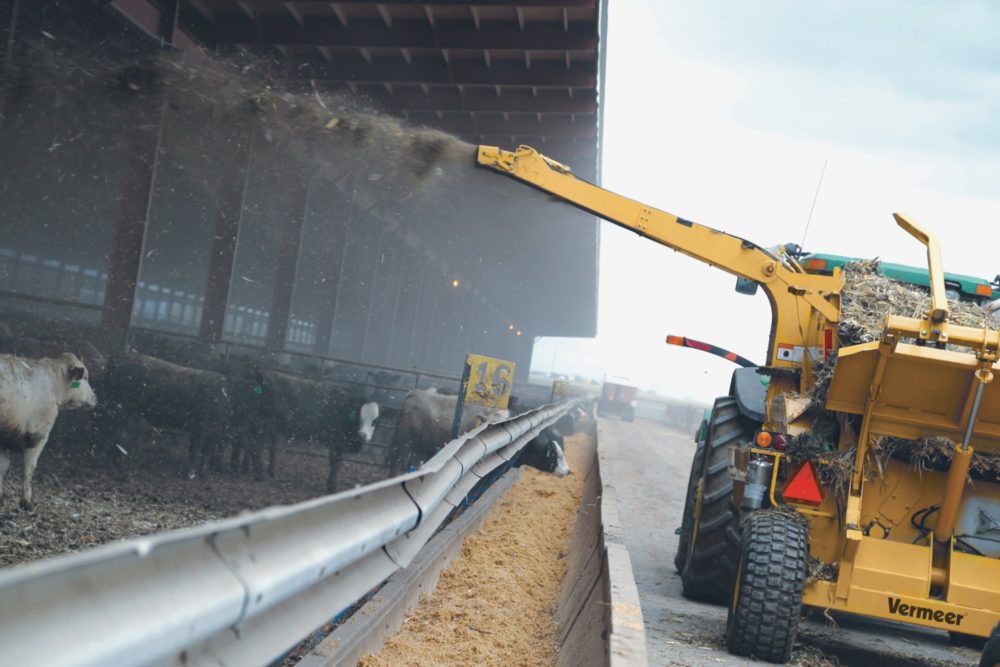
The BPX9010 bale processor has other features that specifically help the operator get more out of the available bedding material. A bottom deflector with five positions helps throw hay different distances to help evenly distribute the bedding, while adjustable sidewalls help manage misshapen bales and the optional powered sidewall with three straight forks enables the operator to more efficiently process large square bales as well as round bales.
But like any machinery, bale processors require maintenance so you have optimum performance when it is time to use the equipment for bedding.
“Maintenance can be minimal with a bale processor but we want to make sure the flails stay sharp and we replace them when needed. Change the flails when they’re dull, too, because when they’re not sharp, it increases the amount of time it takes to process a bale. The even flow of material through the processor is achieved through the chain bed of the BPX9010 bale processor. That allows you to process bales more efficiently,” Kindley said.
A major benefit of the BPX9010 bale processor, Kindley added, is its versatility. It can be used for both bedding and feeding cattle in a variety of applications.


